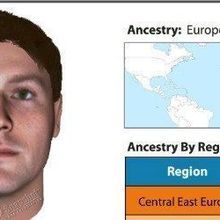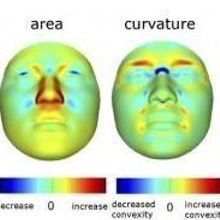Login
Subscribeforensics

Did Lucy Fall to Her Death?
Alison F. Takemura | Aug 31, 2016 | 2 min read
An analysis of bone fractures in the famous hominid’s fossil remains suggest that she stretched out her arms to brace for a fall before she died.

Submerged Pigs Inform Forensics
Jef Akst | Jul 1, 2016 | 5 min read
Watching the decomposition of pig carcasses anchored to the seafloor is helping forensic researchers understand what to expect of human remains dumped in the ocean.

Well-Brined Pork
The Scientist Staff | Jun 30, 2016 | 1 min read
Watch what happens when marine organisms have their way with a sunken pig carcass.

Genes Expressed After Death
Tanya Lewis | Jun 23, 2016 | 1 min read
Understanding postmortem gene expression could help researchers improve organ transplants and time-of-death estimates, according to studies on mice and zebrafish.

Capsule Reviews
Bob Grant | May 1, 2016 | 4 min read
Sorting the Beef from the Bull, Cheats and Deceits, A Sea of Glass, and Following the Wild Bees

Fingerprints Yield Sex Info
Karen Zusi | Nov 5, 2015 | 2 min read
The amino acids left behind in a human fingerprint can be used to determine whether an individual is male or female.

Police Sketches Via DNA
Kerry Grens | Jul 1, 2015 | 1 min read
For assistance in solving crimes, a company has developed a service that will construct a face based on a genetic sample.

Microbiome Fingerprints
Kate Yandell | May 11, 2015 | 3 min read
Researchers identify people by the unique combinations of microbes found in and on their bodies.

Microbes Could Help Solve Sex Crimes
Kerry Grens | Dec 17, 2014 | 1 min read
Microbial species found in pubic hair samples could help track down criminals.

DNA Mugshots
Rina Shaikh-Lesko | Mar 24, 2014 | 1 min read
Variants of 20 genes can predict the shape of a person’s face, a study finds.

The Necrobiome
Chris Palmer | Feb 1, 2014 | 4 min read
Next-generation sequencing of the bacterial assemblages that inhabit a corpse throughout decomposition improve time-of-death estimates.

Microbes May Help Solve Mysteries
Kate Yandell | Sep 25, 2013 | 2 min read
The microbial community composition of a corpse could indicate how long the person has been dead, according to a study on decomposing mice.

The Price of DNA IDs
Jef Akst | Sep 16, 2013 | 2 min read
Following natural disasters or violent political turmoil, DNA science can help identify victims. But what if a country can’t afford the technology?

Panel Eviscerates UK Forensic Science
Chris Palmer | Jul 25, 2013 | 2 min read
Turmoil in UK forensic services could threaten the integrity of the country’s criminal justice system, according to a government report.

Ancient Appearances
Kate Yandell | May 1, 2013 | 4 min read
A new DNA assay developed by forensic scientists helps archaeologists reconstruct eye and hair color from old teeth and bones.

IDing War Victims
Jef Akst | May 1, 2013 | 4 min read
Libyan scientists, soon to be trained in countries around the world, are undertaking a massive search mission to find missing loved ones among thousands of dead bodies, casualties of the country’s recent popular revolution.

DNA Reveals Ancient Looks
Dan Cossins | Jan 17, 2013 | 1 min read
By analyzing a collection of 24 genetic variations, researchers are able to predict the hair and eye color of long-dead humans.

Ancient Pharaoh Was Murdered
Jef Akst | Dec 18, 2012 | 2 min read
DNA samples and CT scans reveal that Ramesses III likely had his throat slashed by his son and other conspirators.
Forensic Law Turns to Epigenetics
Edyta Zielinska | Sep 25, 2012 | 1 min read
Privacy advocates are arguing that collecting genetic data upon arrest is an invasion of privacy, given recent evidence that 80 percent of the human genome is functional.
Better Forensic Science Needed
Jef Akst | Aug 24, 2012 | 2 min read
Speakers at the American Chemical Society (ACS) meeting in Philadelphia this week call for researchers to help improve forensic practices.